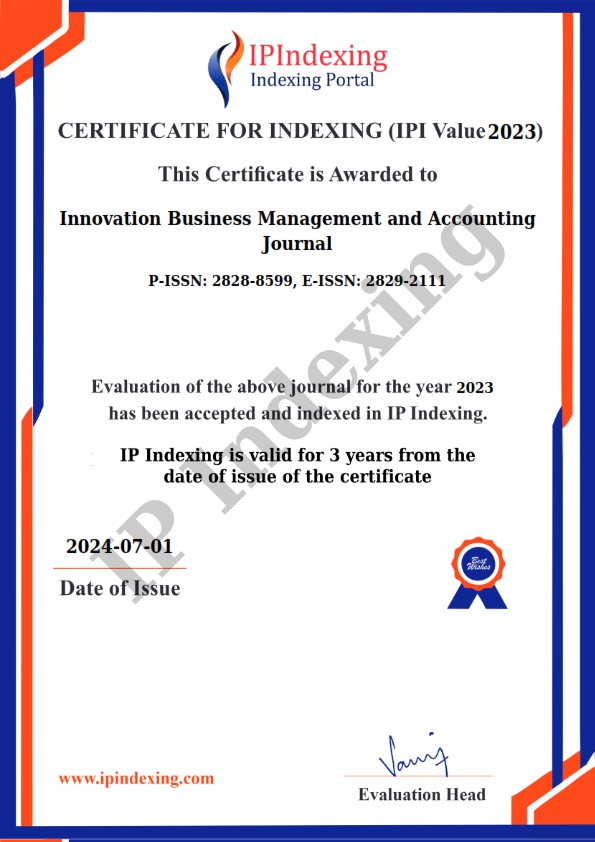Analysis of Customer Satisfaction towards Waste Transportation Using the Important Performance Analysis Method
DOI:
https://doi.org/10.56070/ibmaj.2024.037Keywords:
Assurance, Empathy, Reliability, Responsiveness, TangiblesAbstract
This research aims to identify quality aspects that cause customer satisfaction in waste transportation at the Banyuwangi Regency Environmental Service. The data used in this research is primary data. The data processing method in this research uses validity tests and reliability tests which are data instrument test analysis methods, as well as testing physical evidence (tangible value) which is an attribute of the five dimensions of service quality, dependability (reliability), responsiveness, sense of security and empathy. The research results show that the gap value in the reliability aspect is very low, this shows that the service quality of the Banyuwangi Regency Environmental Service is very satisfying to customers. Meanwhile, the responsiveness dimension has the biggest gap, this shows that customers are dissatisfied with the responsiveness of the Banyuwangi Regency Environmental Service in overcoming existing problems. This will of course be a reference for improving the quality of services of the Banyuwangi Regency Environmental Service.
Downloads
References
Al-Omari, Z., Alomari, K., & Aljawarneh, N. (2020). The role of empowerment in improving internal process, customer satisfaction, learning and growth. Management Science Letters, 10(4), 841-848. https://doi.org/10.5267/j.msl.2019.10.013
Brusa, J. O., & Bahmani-OSkooee, M. (2022). the Influence of Location Accessibility on Community Satisfaction With the Quality of Texas District Public Health Services As Intervening Variables. MEDALION JOURNAL: Medical Research, Nursing, Health and Midwife Participation, 3(3), 117-123. https://doi.org/10.59733/medalion.v3i3.49
Bungatang, B., & Reynel, R. (2021). The effect of service quality elements on customer satisfaction. Golden Ratio of Marketing and Applied Psychology of Business, 1(2), 107-118. https://doi.org/10.52970/grmapb.v1i2.102
Gajewska, T., Zimon, D., Kaczor, G., & Madzík, P. (2020). The impact of the level of customer satisfaction on the quality of e-commerce services. International Journal of Productivity and Performance Management, 69(4), 666-684. https://doi.org/10.1108/IJPPM-01-2019-0018
Khan, R. U., Salamzadeh, Y., Iqbal, Q., & Yang, S. (2022). The impact of customer relationship management and company reputation on customer loyalty: The mediating role of customer satisfaction. Journal of Relationship Marketing, 21(1), 1-26. https://doi.org/10.1080/15332667.2020.1840904
Kurdi, B., Alshurideh, M., & Alnaser, A. (2020). The impact of employee satisfaction on customer satisfaction: Theoretical and empirical underpinning. Management Science Letters, 10(15), 3561-3570. https://doi.org/10.1080/15332667.2020.1840904
Retnandari, N. D. (2022). Implementation of strategic planning in regional/municipal governments, obstacles and challenges. Policy & Governance Review, 6(2), 155-175. https://doi.org/10.30589/pgr.v6i2.556
Rızvanoğlu, O., Kaya, S., Ulukavak, M., & Yeşilnacar, M. İ. (2020). Optimization of municipal solid waste collection and transportation routes, through linear programming and geographic information system: a case study from Şanlıurfa, Turkey. Environmental Monitoring and Assessment, 192, 1-12. https://doi.org/10.1007/s10661-019-7975-1
Sampurna, P. A., & Miranti, T. (2022). The effect of service quality, banking digitalization, and customer relationship management (CRM) on customer loyalty. Jurnal Maksipreneur: Manajemen, Koperasi, Dan Entrepreneurship, 12(1), 303-315. https://doi.org/10.30588/jmp.v12i1.1138
Shokouhyar, S., Shokoohyar, S., & Safari, S. (2020). Research on the influence of after-sales service quality factors on customer satisfaction. Journal of Retailing and Consumer Services, 56, 102139. https://doi.org/10.1016/j.jretconser.2020.102139
Singh, N., Poonia, T., Siwal, S. S., Srivastav, A. L., Sharma, H. K., & Mittal, S. K. (2022). Challenges of water contamination in urban areas. In Current directions in water scarcity research (Vol. 6, pp. 173-202). Elsevier. https://doi.org/10.1016/B978-0-323-91838-1.00008-7
Downloads
Published
How to Cite
Issue
Section
License
Copyright (c) 2024 Muhdar Muhdar, Harvian Bagus Dewantara, Eko Afrianti

This work is licensed under a Creative Commons Attribution-ShareAlike 4.0 International License.



